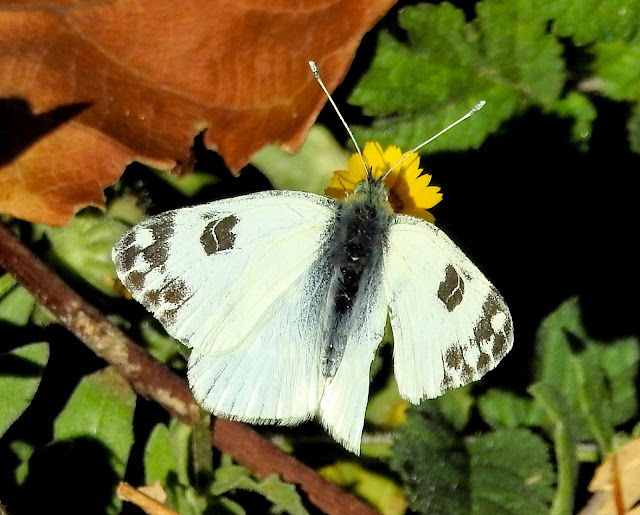This Blog contains Wildlife, Plants and Bird Photos from Walks, Safaris, Birding Trips and Vacations. Most of the pictures have been taken with my Nikon P900 and P950X cameras. Just click on any image for a larger picture. On the right column under the Blog Archive are the entries by date. Below that under Animal categories all the diffent species of Animals, Birds, Insects and Plants contained in the website are listed. Clicking on any entry will show all the entries for that species.
TOTAL PAGEVIEWS
TRANSLATE
Saturday, 26 January 2019
Thursday, 24 January 2019
18-4-2018 CHOBE NAT PARK, BOTSWANA - SOUTHERN GREATER KUDU (FEMALE) (Tragelaphus Strepsiceros) COURTESY OF MRS VALERIE FISHER
The greater kudu (Tragelaphus strepsiceros) is a large woodland antelope, found throughout eastern and southern Africa. Despite occupying such widespread territory, they are sparsely populated in most areas due to declining habitat, deforestation, and poaching. The greater kudu is one of two species commonly known as kudu, the other being the lesser kudu, T. imberbis.
Kudu (/kuːduː/ koo-DOO), or koodoo, is the Khoikhoi name for this antelope. Trag- (Greek) denotes a goat and elaphos (Greek) a deer. Strepho (Greek) means 'twist', and strepsis is 'twisting'. Keras (Greek) refers to the horn of the animal.
Greater kudus have a narrow body with long legs, and their coats can range from brown/bluish grey to reddish brown. They possess between 4 and 12 vertical white stripes along their torso. The head tends to be darker in colour than the rest of the body, and exhibits a small white chevron which runs between the eyes. Greater kudu bulls tend to be much larger than the cows, and vocalize much more, utilizing low grunts, clucks, humming, and gasping. The bulls also have beards running along their throats, and large horns with two and a half twists, which, were they to be straightened, would reach an average length of 120 cm (47 in), with the record being 187.64 cm (73.87 in). They diverge slightly as they slant back from the head. The horns do not begin to grow until the bull is between the ages of 6–12 months. The horns form the first spiral rotation at around 2 years of age, and not reaching the full two and a half rotations until they are 6 years old; occasionally they may even have 3 full turns.
The greater kudu is one of the largest species of antelope, being slightly smaller than the bongo. Bulls weigh 190–270 kg (420–600 lb), with a maximum of 315 kg (694 lb), and stand up to 160 cm (63 in) tall at the shoulder. The ears of the greater kudu are large and round. Cows weigh 120–210 kg (260–460 lb) and stand as little as 100 cm (39 in) tall at the shoulder; they are hornless, without a beard or nose markings. The head-and-body length is 185–245 cm (6.07–8.04 ft), to which the tail may add a further 30–55 cm (12–22 in).
Wednesday, 23 January 2019
Tuesday, 22 January 2019
Monday, 21 January 2019
Sunday, 20 January 2019
16-1-2019 BIOPARC, VALENCIA - WHITE BACKED VULTURE (Gyps africanus)
White-backed vultures are obligate scavengers with a high level of specialization on carrion. Their primary food sources are the carcasses of large, grazing animals found the wooded savannahs where it lives. This includes warthogs, zebras, gazelles, ostriches and even livestock. Their beaks are medium-sized not adapted for tearing through tough skin, so they are limited to eating soft tissues, such as the viscera, using a pulling feeding tactic.
White-backed vultures circle through the sky in search of freshly dead animals, often following other scavenger birds and mammalian carnivores to find it. Gyps vultures are considered social vultures which rely heavily on conspecifics to provide information about the position of food and carcasses. Once a carcass is found, they will begin wheeling in the sky, signalling their discovery to other vultures.[citation needed] White-backed vultures feed in groups and are often one of the first vulture species to arrive at a carcass. This leads to this species having a high dominance at carcasses in comparison to other vulture species such as white-headed, hooded, and Egyptian vultures.
After feeding, white-backed vultures often rest with their wings spread and their backs facing the sun, as they have gorged themselves so much they can no longer fly.
White-backed vultures nest in trees. They typically choose tall trees along riparian habitats and show strong a preference for Acacia species. The nests are large, around 1m in diameter, and are made of large sticks and lined with leaves and grasses.
Subscribe to:
Posts (Atom)

















































